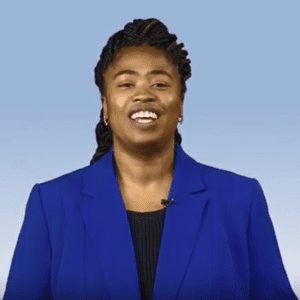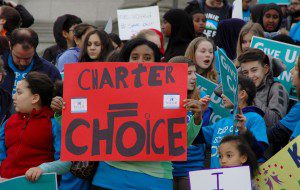Education Advocate July 2016

|
|
|||||

|
|
|||||
L ike most professions, the education landscape is full of acronyms and jargon. As we gear up for the 2017 state legislative session which will focus on education funding, the LEV Policy Team has created this glossary of key terms you will likely hear:
ike most professions, the education landscape is full of acronyms and jargon. As we gear up for the 2017 state legislative session which will focus on education funding, the LEV Policy Team has created this glossary of key terms you will likely hear:

During the 2016 session, the Washington legislature passed Opportunity Gap House Bill 1541, which includes significant changes to student discipline laws.
These changes also affect the rules for student discipline (Chapter 392-400 WAC) and student enrollment reporting for state funding (WAC 392-121-108) during the period of suspension and expulsion. The Washington Office of the Superintendent of Public Instruction (OSPI) will align the rules with this new law before the upcoming school year. OSPI will provide further clarification through additional rulemaking during the 2016–17 school year.
Below is summary of changes effective June 9 that impact the 2016–17 school year. For more information, see OSPI Bulletin No. 024-16.
Limitations on Long-Term Suspensions and Expulsions
A long-term suspension or expulsion must not exceed the length of an academic term, as defined by the school board, from the time of the disciplinary action. This shortens the maximum length of a suspension or expulsion from the prior limitation of one calendar year.
School districts must not use long-term suspension or expulsion as a form of discretionary discipline. “Discretionary discipline” is a disciplinary action taken by a district for student behavior that violates the rules of student conduct, except for actions taken in response to:
Except for in response to the above, school districts may no longer use long-term suspension or expulsion. Even for any of the violations above, districts should consider alternative actions before using long-term suspension or expulsion, except for violation of the prohibition against firearms on school premises.
Possession of a telecommunication device and violation of dress and grooming codes are removed from the list of discretionary violations that, if performed two or more times within a three-year period, may result in long-term suspension or expulsion.
Requirement to Provide Educational Services
School districts may not suspend the provision of educational services as a disciplinary action, whether discretionary or nondiscretionary.
While students may be excluded from classrooms and other instructional or activity areas for the period of suspension or expulsion, districts must provide students with an opportunity to receive educational services during that time.
If educational services are provided in an alternative setting, the alternative setting should be comparable, equitable, and appropriate to the regular education services a student would have received without the exclusionary discipline.
Reengagement Plan and Meeting
School districts must convene a reengagement meeting with the student and family when a long-term suspension or expulsion is imposed.
Families must have access to, provide meaningful input on, and have the opportunity to participate in a culturally sensitive and culturally responsive reengagement plan.
Policies and Procedures
School districts must:
Questions? Contact OSPI:
For questions about student discipline, alternatives to suspension, and reengagement meetings:
Joshua Lynch, Program Supervisor | Student Discipline and Behavior
joshua.lynch@k12.wa.us | 360-725-4969
For questions about Alternative Learning Experience (ALE) and online learning:
Lillian Hunter, Director | Digital Learning Department
lillian.hunter@k12.wa.us | 206-543-5426
For questions about student enrollment reporting for state funding:
Becky McLean, Supervisor | Enrollment Reporting and Categorical Funding
becky.mclean@k12.wa.us | 360-725-6306
Additional Resources

Kent School District’s iGrad Academy is a program unlike any other in the district. Comprised of six pathways, students choose from a range of opportunities. They can earn a high school diploma or two-year AA degree as iGrad fosters unique plans for individual students that did not find educational success at their previous school. iGrad offers what Principal Carol Cleveland calls a 1418 program, which follows a nontraditional calendar year, nontraditional instructional hours, a lower teacher-to-student ratio, a lower counselor-to-student ratio, and commits to addressing the needs of the whole child. These unique elements are what make iGrad one of a kind.
As a young girl, Principal Cleveland dreamed of becoming a doctor but education ran in the family. After substitute teaching in Georgia, she witnessed a lack of adequate attention given to students with special learning needs. These students were being directed down a path that would ultimately create a larger achievement gap. It was this experience that made her realize the education system needed her help.
Determined to influence educational policy, decision making, and progress for students like those with special needs, Cleveland began working tirelessly. In 2012, such determination brought her to her position today as the leader and principal of iGrad Academy.
As an advocate for specialized education systems, Cleveland is passionate about the iGrad program and curriculum. The basic principle of the program, she says, is to grant young learners and educators the flexibility to think and operate outside of the box to ensure that students are college, career, and life ready. Such a foundation enables all those who attend, and teach, to have more freedom. The teachers at iGrad all believe that students can learn and experience academic, social, and personal success. Common belief in individual potential creates a strong bond between educator and student and contributes to the success of the program.
At iGrad, relationships are everything. Principal Cleveland goes out of her way to get to know every single student. By setting up monthly meetings with students, Cleveland takes a hands-on approach as school leader. She hears directly from participants in the program about what is and is not working. For students to reach their goals, Cleveland values listening to what they want and what they need. As a result, iGrad has seen exponential educational growth.
After several years at iGrad and tracking the progress of the program and its students, Principal Cleveland is thinking about the future. By working to strengthen relationships between middle schools and high schools, businesses and colleges, Cleveland hopes to expand opportunities to teach students how to apply what they are learning in the classroom to the real world. Students gain greater insight and create more options for themselves when they learn from business professionals which skills and abilities are desirable in employees.
Unfortunately, funding remains a challenge for the program. In addition to statewide inadequacies in support for public education, Open Door programs have different accountability measures and that can directly impact funding. Even though students don’t always show academic progress in accordance with state timelines, Principal Cleveland and her staff believe that every student can learn. Many students have been given the tools needed to move forward in their educational pursuit by attending iGrad and Cleveland hopes the community will continue to support her efforts to increase the number of success stories.
Carol Cleveland’s medical career never took flight but she is healing broken dreams and changes hundreds of lives every day. Through her dedication to closing the opportunity gap and her success as the leader of iGrad Academy, she has created a pathway to success for many young adults who have struggled to find their own way. The League of Education Voters celebrates this amazing woman and her stellar program.
Caring, innovative, supportive, flexible, and successful – shouldn’t Carol Cleveland’s approach be basic education?
—
iGrad Academy is grateful for the support students receive from community members. If you are interested in making a donation, iGrad is always in need of the following items:
School Supplies: paper, pencils, pens, pee-chee style folders, spiral single-subject notebooks
Metro Bus tickets / Orca Cards: Help students get to and from school
Graduation Items: Gowns, Caps, Tassels
Toiletry items: for males and females, all ethnicities
New undergarments: for males and females
Gift Cards for achievement prizes: Starbucks, Fred Meyer, Target, etc…
One time need:
Female and Male mannequin (to dress in caps and gowns for inspiration)
Young Adult Books:
Many iGrad students love to read and the Academy is working to build a library of young adult books for them. If you’re interested in making a donation, there are lists of suggested titles and authors below:
King County Library System Teen Booklist:
http://www.kcls.org/teens/booklists/bibliocommonsBookList.cfm?booklist_id=209620665
Alex Award for Young Adult Fiction:
http://www.ala.org/yalsa/alex-awards
Quick Picks for Reluctant Young Adult Readers:
http://www.ala.org/yalsa/quick-picks-reluctant-young-adult-readers
Other Specific Publishers:
Other Specific Authors:
Allison Van Diepen’s urban fiction
Other Specific Title:
If you prefer to donate cash:
If you prefer to donate cash, iGrad Academy has established a trust fund which is used to purchase items that will allow students to focus on their learning. In addition to the above items, the Trust Fund may purchase online access for a student without internet, required materials for a college class, or a change of clothing for a homeless student. Please call 253.373.4723 to express interest.
#BeyondBasic

|
|
|||||
At the League of Education Voters (LEV), we recognize all of the hard work that you do toward improving public education across Washington state. We are pleased to announce our Activist of the Month for June: Mary Fertakis.

For more than two decades, Tukwila School Board member Mary Fertakis has been fighting for people who have been marginalized – denied opportunity by race, place of birth, or government.
She first became involved with LEV in 2007, when simple majority for school levies was on the ballot. Mary worked on that issue through the Washington State School Directors Association before meeting LEV co-founder Lisa Macfarlane at Tyee High School in Sea-Tac. “The key for both WSSDA and LEV’s advocacy on that issue was separating levies from bonds,” Mary explains.
Mary has seen change happen when multiple groups from different sectors have been working on an issue separately and then converge, like the spokes of a wheel. Mary saw it most recently with early learning. She says, “UW research in early childhood, brain development, and I-LABS, plus the health and early learning communities, non-profits/funders, and K-12 education leaders all got the message out. Each entity had a touch point so different audiences could connect with why it’s important.” And she saw the result in a recent, successful Tukwila School District bond measure that included a Birth to 5 center.
The education world has been with Mary throughout her life. Her father taught in the Seattle School District and her mother was a scientist, running the University of Washington’s pathology lab for years. She credits her parents for instilling values that are important to her. They discussed weighty issues, took her to the fire station when they voted (in every election), and exposed her to different cultures through travel and the UW’s international students who worked in the lab. She grew up in Seattle when social justice issues made regular headlines and her family was part of activist efforts through the faith community to re-settle Hmong and Vietnamese refugees in the 1970s.
But joining the Peace Corps to work in Senegal for 2½ years affected her most deeply. “That’s when I saw firsthand how education can break the cycle of poverty,” Mary says. She lived in a village about 2 miles from the border of The Gambia, “the middle of nowhere,” and focused on rural development. Her program’s goal was to help village communities build a self-sustaining infrastructure where none had existed. “I learned what you need for a community to become self-sustaining.”
Mary wrote 11 grants and every grant got funded, which allowed her village to build a school, dig a well, start a health hut, build fuel-efficient stoves, engage in reforestation efforts, ensure that every family compound and the school had a latrine, build a grain storage facility, and create a 1-hectare garden that improved access to food and spawned micro-enterprise, with the excess produce sold at the weekly market in The Gambia. She even brought in a millet-pounding machine, which saved village women significant time on a daily chore and was an income source as women from surrounding villages paid to use it. The combination of freeing up the women’s time and creating an income source enabled them to launch a tie-dying business. Mary says, “It could not have been more perfect.”
Transitioning back to the U.S. was hard. It took a year for her to not feel nauseated when she walked into a grocery store. “I couldn’t handle an entire aisle of cereal boxes,” Mary explains. “Senegal is a drought county. When the villagers didn’t eat, I didn’t eat. Seeing so much food was overwhelming.”
Everything she’s been able to do since that experience has been icing on the cake. Mary has had the unique privilege, by the time she was 27, of knowing that she made a difference in the world. She and her husband provided some financial support for one of her village brothers to attend college – the first person from the village to do so. He graduated and now teaches in a town with Internet access, which has given her a way to stay in touch with her village. She took her oldest son to visit when he was 5 years old, and longs for the day she can take her youngest son to meet his Senegalese family.
Living in Tukwila, Mary feels like she’s still having the Peace Corps experience. She empathizes with the challenges of many of the district’s students and their families – what it feels like to be dropped into a foreign culture and having to deal with full immersion. “It’s exhausting,” she says. “People here don’t understand how long it takes to learn another language, what the cultural norms are, and many of the basics of everyday life in a different culture.”
Mary had no idea she would still be on the Tukwila School Board more than 20 years after first running for office in 1995. She has watched the district change dramatically, shifting from a majority Caucasian, blue-collar, Boeing town to an ethnically-diverse school district where Caucasians are now the minority. She found it incredibly helpful that she had the experience of living in a Muslim country. Bosnians first arrived in Tukwila, then Somali refugees. Mary was able to help incorporate Muslim cultural issues like Ramadan, food, and health concerns into district awareness and policy.
At some point in her busy life, Mary wants to write a children’s picture book based on an experience during her time in Senegal that she shares with students when she does presentations and is explaining the concept of “world view.” In her village, which still has no electricity, nights are pitch dark with an explosion of stars. Her mother sent a book of constellations so she could learn about them. Mary told her village father that it contained drawings of what is in the sky and asked if they had something similar in their culture. When he responded, “yes” she pointed out the Big Dipper, describing it, in Wolof, as “a box with a stick coming out of it – we call that the Big Spoon.” Her father looked at it, and after a few moments, said that he saw that image – and that they call that cluster of stars the Elephant. After a few moments, she was able to see that also (the Dipper handle is the trunk, the rest of the constellation are its legs). Mary says, “So here we were, looking at the same thing and seeing something completely different based on our life experience.”
Now, when Mary gazes at the night sky in Tukwila, sometimes she looks at the Big Dipper and sometimes she looks at the Elephant.

Thanks to the passage of House Bill 1541, students will no longer be suspended or expelled for discretionary offenses, and better statewide data on student demographics will ensure that the system is working to keep all students on track and in school. All students suspended or expelled will receive educational services and school staff will be provided with new trainings that are sensitive to culture and positively support all students’ growth.
• Districts must annually disseminate discipline policies, procedures and data to students, families, and community.
• Districts must periodically review and update discipline rules, policies, and procedures.
• The Washington State School Directors Association (WSSDA) must develop a model policy by December 1, 2016:
• The Office of the Superintendent of Public Instruction (OSPI) must develop training for school staff on discipline policies and procedures (subject to appropriations).
• School districts are strongly encouraged to provide the trainings to all school and district staff.
• Prohibits the use of long-term suspension or expulsion as a form of discretionary discipline:
• School districts may not suspend educational services as a form of discipline.
• School districts must provide an opportunity for students to receive educational services when suspended or expelled:
• Expulsions may only be the length of an academic term, as defined by the school board.
• School districts must convene a re-engagement plan meeting no later than 5-days before a student’s re-enrollment after a long-term suspension or expulsion:
• The Washington State Education Research and Data Center (ERDC) must produce a regular report on the outcomes of youth in the juvenile justice system.
• WSSDA must develop a plan for the creation and delivery of cultural competency training to school board directors and superintendents.
• OSPI must incorporate cultural competence training into Teacher/Principal Evaluation Program (TPEP) training.
• OSPI must develop an outline for professional development and training for school staff, including classified staff (subject to appropriation).
• School Improvement Grant (SIG), Required Action District (RAD), priority, and focus schools are encouraged to provide cultural competency training for classified, certificated, and administrative staff.
• By the 2019-2020 school year, all classroom teachers funded with Transitional Bilingual Instructional Program (TBIP) funds must be endorsed in either bilingual education or English Language Learner (ELL) instruction.
• OSPI will provide districts with technical assistance and support in selecting program models, instructional materials, and professional development for serving English Language Learners (subject to appropriation).
• OSPI shall identify the schools in the top 5% of schools with the highest growth in ELL populations, and notify and encourage the schools and districts to provide cultural competence professional development.
• Beginning 2017-2018, all data collected and reported by school districts and OSPI must be disaggregated according to the federal subracial and subethnic categories, including:
• OSPI shall convene a task force to develop guidance on race and ethnicity reporting (subject to appropriation).
• Reduces the reportable size of a student group to 10 students, instead of 20 students.
• OSPI must develop data protocols and guidance for school districts and modify the student data system as needed.
• OSPI must incorporate training for school staff based on best practices for the collection of data on student race and ethnicity in other training or professional development (PD).
• To the extent data is available, OSPI must collect and make available on the Internet teacher demographic data by district.
• To the extent data is available, OSPI must collect and make available on the Internet teacher average length of service data by district.
• The Department of Early Learning must work with OSPI to create a community information and involvement plan for home-based, tribal, and family early learning providers on the Early Achievers program.
• Establishes the Washington Integrated Student Supports Protocol (WISSP), which will (subject to appropriation):
• The WISSP will include:
• OSPI shall establish a workgroup to determine how to best implement the WISSP framework (subject to appropriation):
• Reestablishes the Center for Improved Student Learning (CISL) at OSPI (subject to appropriation).
Love what we do? Support our work
Want to find out the latest in education news in Washington? Subscribe to our newsletter
Want to learn more about League of Education Voters? Find out here
By the LEV Policy Team
The third and final installment of NPR’s School Money series asks the question, “is there a better way to pay for schools?” The piece explores some of the challenges states have faced in school funding, such as the Taxpayer Bill of Rights in Colorado, and three potential areas to change funding systems: property taxes, local control, and federal funding. The article is wide-ranging and does not offer specific proposals for reform. Ultimately readers are encouraged to engage in a dialogue, looking at the different needs of students in schools, and take a common view of students in their states and across the nation to address disparities in school funding.
The property tax section tells the story of Wyoming. In response to a court decision that ordered the legislature to “treat the wealth of the state as a whole,” the state increased and redistributed funding for schools, taking property tax revenue from districts with high property values and using it in districts with lower property values. However, while this system provides more funding for districts that cannot generate the same amount of money as wealthier districts, it does not take into consideration student need. This may be one of the reasons that the increase in funding has not resulted in an increase in student achievement. Increased investments need to be targeted to students if additional funding is to impact student outcomes, as we saw here. In Washington, we must be intentional about how we invest the new dollars for McCleary. We cannot simply put more money into a system that is not meeting the needs of so many of Washington’s students, particularly students of color and students living in poverty. Systems change and investment need to happen at the same time.
The California local control story offers an example of how resources can be targeted to the students that need them most. California provides additional resources based on student needs at the school level. The principal and the school community, including parents, then decide how to best spend those additional dollars. With this flexibility and local control also comes increased accountability—the principal is evaluated on student achievement, parent engagement, and school climate to ensure that the increased investments are being spent in ways that improve student outcomes. While it is very early in the implementation of California’s new funding model, the principles of student-focused investments, school level accountability according to multiple measures, and transparency in the budgeting process are all important considerations as we invest new resources into Washington’s schools.
While the NPR series has highlighted that money matters, and more importantly, how we use money matters, it has also illuminated that there is no single fix to the school funding issues plaguing most states. We may learn from the experiences of other states, but as we move forward to address our own inadequate and inequitable funding systems we will have to engage each other to find our own way. We need to view every student in Washington as our own student, not just the student that lives in our district. We must also understand that different students will require different levels of resources to access the same educational opportunities. Increased funding is not by definition equitable funding. We need to invest in every student with the intention of providing equal opportunity to learn, which will require viewing money as a tool, not an end in itself. If we keep the student at the center of our work, we have the potential to leverage the McCleary investments to provide equitable resources based on student needs and to begin to close opportunity gaps.

|
|
|||||

During the 2016 session, the legislature passed Senate Bill 6194 to ensure the survival of Washington state’s nine public charter schools.
See a comparison of SB 6194 and the original 2012 Public Charter Schools Initiative 1240 HERE